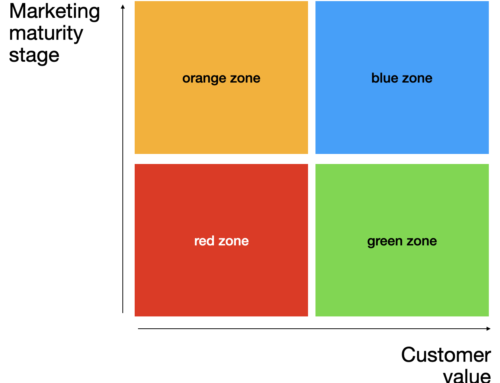In a world where technology is taking over, channels are getting out of control, privacy is being hacked, and loyalty is being eroded, marketing must become more relevant and meaningful in order to deliver success.
Would you agree?
Well for those that are reading on, I’d like to explore the challenges around achieving meaningful connection.
Plus I’d like to outline four ideas on how to make your marketing more meaningful.
Firstly, what do I mean by meaningful connection?
I see it on 5 levels. It’s more complex than you think:
1. Connection with business people
By this I mean between people within your business.
Getting team members to unite and align within teams. I’m constantly amazed how many marketing teams don’t know or fully understand what others do within their team. Either because they work infrequently together, haven’t been trained properly, or defer to not actually wanting to find out as it’s a different discipline. Which do you think is worse?
I’m also talking about teams uniting and aligning across business divisions and units. With key stakeholders or other people important in the process of taking marketing activity to market (ie: product, sales, contact service centre, IT, analytics, HR etc).
There are a myriad of relationships and interrelationships here. Whilst this sounds complex and often is, to simplify, I remind managers to think about all internal relations as connecting with people.
And by changing it from impersonal labels such as Team X or Team Y or Division A, to people, you can diffuse generalisations, and start talking about creating meaningful connection between people.
2. Connection with external service providers (ie: agencies, vendors, service providers)
In the same way as for 1 above, you can connect more meaningfully with external people.
Often service providers are treated as second rate.
Marketers have the budget and the power to change agencies and suppliers. Sometimes this power is abused, and agencies lose out. Other times marketers foster great working relationships and achieve great value from their investment.
The point I want to make is that you need to think about what connections you have with these external suppliers? Have roles and responsibilities been clearly assigned to the entity? Has capability been clearly assessed and agreed for the people involved? And are there processes in place for people to work effectively and efficiently together?
3. Connection with customers
Meaningful connection with customers is sometimes a challenging one. It’s dealing with the middle people.
Intermediaries, platform owners, &/or retailers that connect with (sell to) the shopper or end user.
For FMCG manufacturers this is the supermarkets. For most alcohol manufacturers or distributors, it’s the liquor retailers. Or pharmacies, or newsagents and so on.
Often called trade marketing. So I’ll use that label.
Marketing is often well down the discussion after procurement contracts, distribution, sell-in strategies and product logistics.
However, when thinking about trade marketing, it’s important to think about connection rather than pure numbers. It humanizes accounts that are often extremely difficult to communicate, let alone negotiate, with.
And it opens up deeper discussion and solutions for relevance.
I had an interesting discussion with an FMCG company around being delisted by a Supermarket chain. When I probed the sales figures, category trends, and their marketing approach, it wasn’t hard to understand the supermarket chain’s point of view.
Sales had declined in a category that was rising. A lack of product innovation had led to the decline and lack of meaning and relevance in consumer’s eyes. If the FMCG company had been honest with themselves, and looked at it on a more human level, then they would have come to the same answer.
So rather than creating angst and blaming the Supermarkets, they could have turned inward and relooked at their connection strategy – which I’m glad to say is now finally happening.
4. Connection with consumers (shoppers and end users)
Now I can hear you saying, “but Anton, this could be 2 different audiences!” Yes it can be, but I’ve lumped them as one to make a point.
Connection with the consumer is more critical than ever. The expectation level for good service has increased dramatically in our always on, and instant tech world.
So you need to think about consumer connection on a consumer journey sense, and relevance sense.
Ask yourself what’s the purpose of the connection and communication?
5. Connection with your purpose, vision and mission
Most importantly, more meaningful connection, should be seen as connecting activity and behaviours to deliver on a business’ overall purpose, vision and mission.
- The purpose is the reason for being. The reason why a business does what it does.
- The vision is the ideal state that a business wishes to achieve. Defining what problem a business is solving (ie: where it is heading).
- The mission describes what business a company is in now, and what business it plans to be in in the future.
These ideas, along with values and behaviours, should act as guides for all marketing activity.
Marketing activity should be measured back to these principles. And therefore, making it meaningful and measurable.
Does that all make sense?
Sorry, it was long winded. However, that’s the point. There can be a myriad of angles to meaningful connection. And hence they’re not words to be thrown around lightly.
For me, the essence comes down to thinking about how to make connections important and worthwhile.
Meaningful connections are those that have a purpose. Whether they be with internal or external to your business.
So, now that we’re hopefully on the same page around making more meaningful connection. How can it be achieved?
Here are four thought starters for you
1. Think from a human perspective
As mentioned above, by changing the terminology from functional to human, you can very quickly change perspectives and outcomes.
A great global societal challenge is that as we get more connected through technology, there’s an undercurrent of discussion that we’re becoming less human. Artificial intelligence, automation, and social media are actually creating anti-social behavior. There’s a great long form piece in the Guardian if you’d like to delve deeper.
So take a look at your marketing activity and put a human filter over everything you’re doing.
Challenge yourself to pull out the human truth (or insight) that has been used as a rationale for the activity.
If there isn’t one, then delve and define it.
Or kill the activity, as it’s probably doing more harm than good
2. Tap into emotion
This is obviously not a new thought. But it’s one I often hear marketers talking about, and when I delve deeper, the reality is that there is no underlying emotional connection strategy.
Another way of thinking about it is have you defined an emotional trigger as an insight or reaction.
Emotional insights are gold.
Gone are the days of surveying, and focus groups.
Emotional insights can be discovered through sensor and monitoring technology. Whether it by heart rate, depth of breathing, neural pathway change, or some other factor.
They’re often driven from our unconscious. And result in irrational behavior. Which is often true. So the key to tapping into emotion is to first define the insight, and then, agree the desired outcome or behavior.
This can often reshape the tone, style, look and format of your marketing communication.
3. Develop a return on technology investment
This has been an interesting area over the past two decades.
As marketers invest more and more in technology, often the return on that investment is overlooked ahead of creating funky automation.
By looking at technology from a meaningful return point of view, it changes the discussion to these three purpose-driven questions:
- what level of human usage are you expecting?
- what level of repeat usage are you expecting?
- and what goals are you looking to achieve with greater human connection?
4. Ask “so what” until people are sick of you asking it
I’ll keep this one short and sweet, because it’s a great little tip.
One of the most important questions to help you focus on creating more meaningful connection is, “so what?”
Whether assessing or creating connections with people, simply ask, “so what?”
This will help you determine if the connections have any meaning for the people involved.
Plus will help you ladder activity to strategy to the overall business vision and mission
Take meaningful action
Strategy is still critical. And the marketing rules of research, differentiation, positioning, segmentation and tightening the area of opportunity still apply.
I’d just like to challenge you to add a more meaningful layer when identifying your connection strategy.
Hopefully you found this post interesting. Successful marketing needs to add real value and not be seen as meaningless.
So if you found this post relevant and meaningful, then please act on it now and take some of the ideas into your business life.
I’ve only scratched the surface in this post. If you’d like to discuss any of the themes in greater depth, then I’d love to hear your thoughts. Click here to contact







Leave A Comment